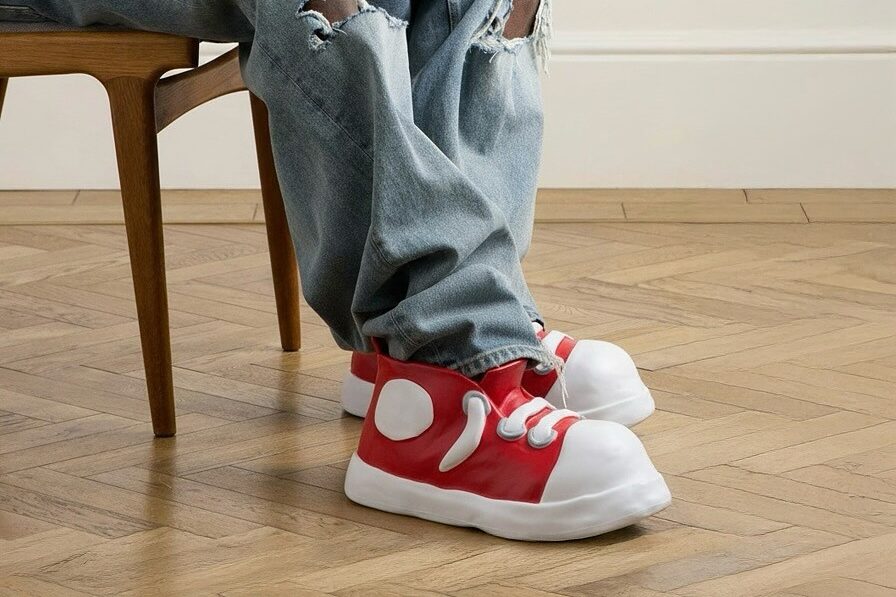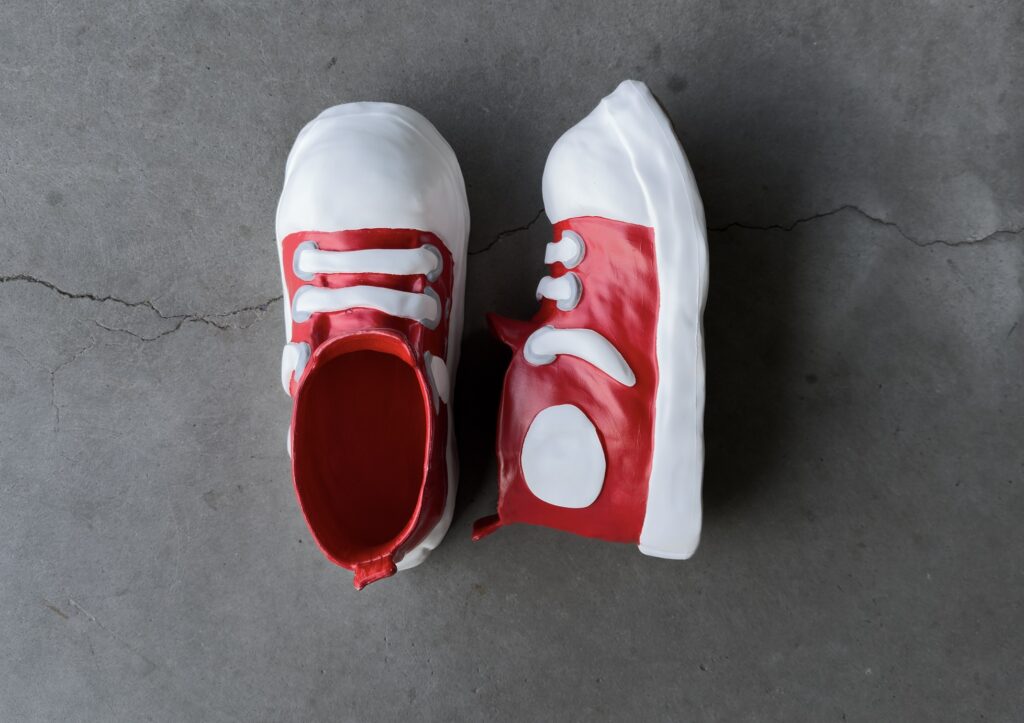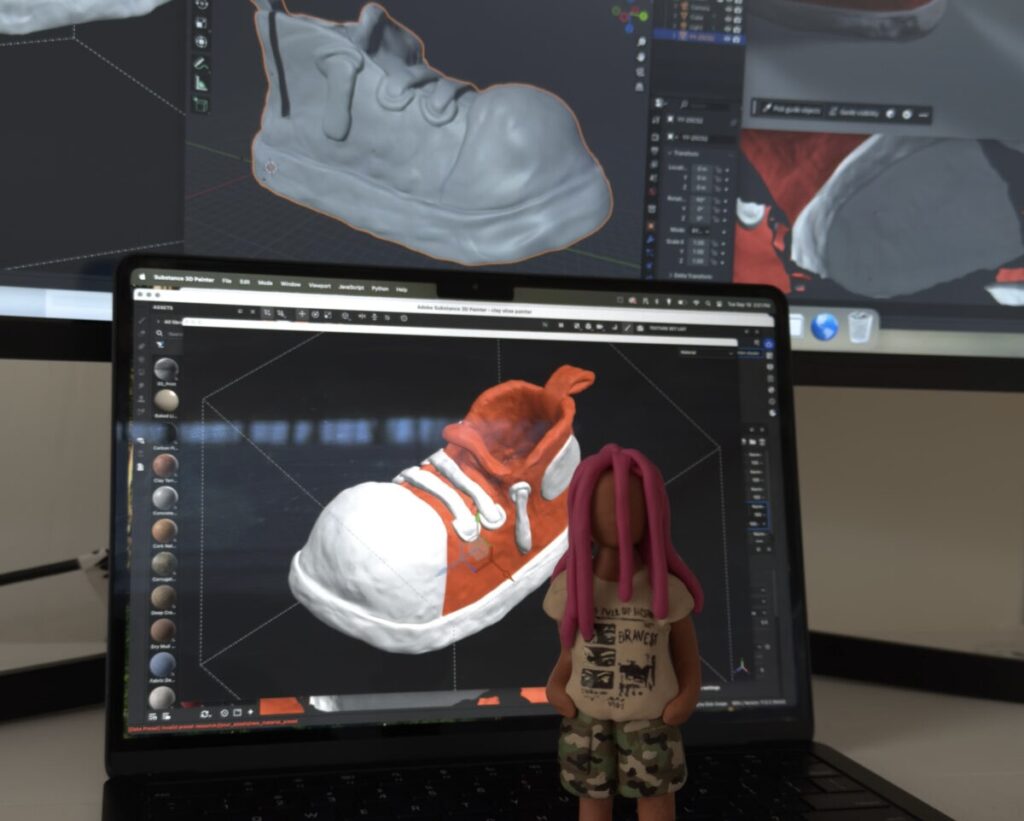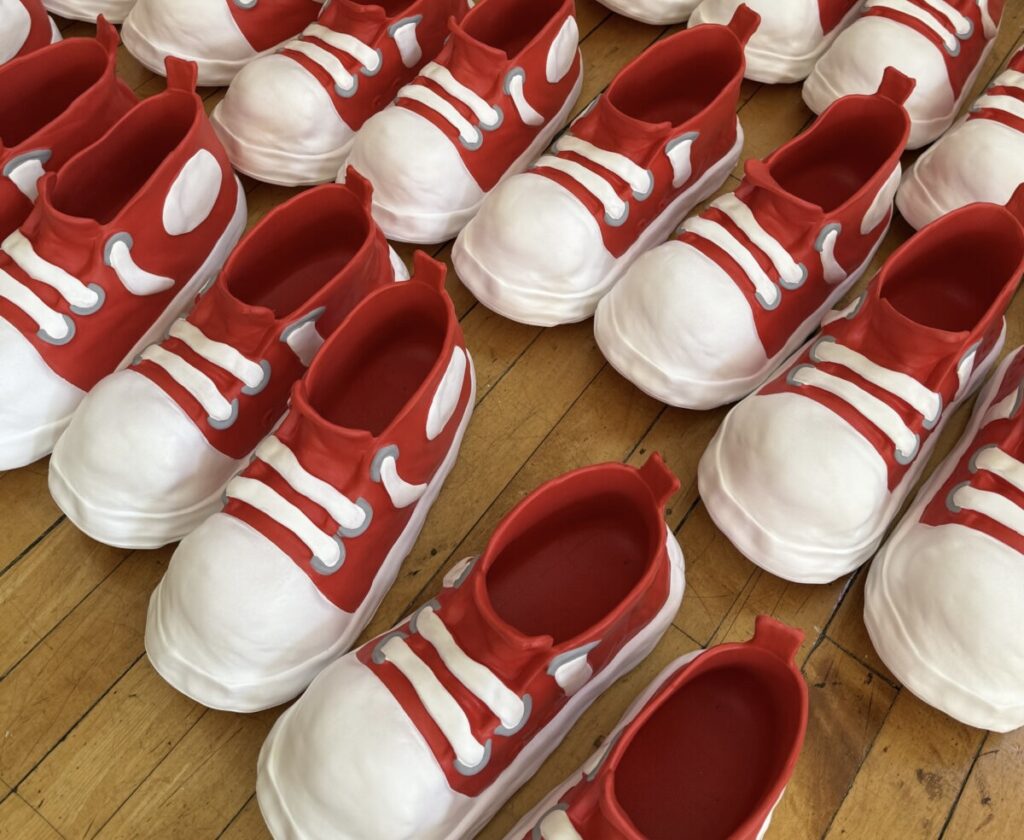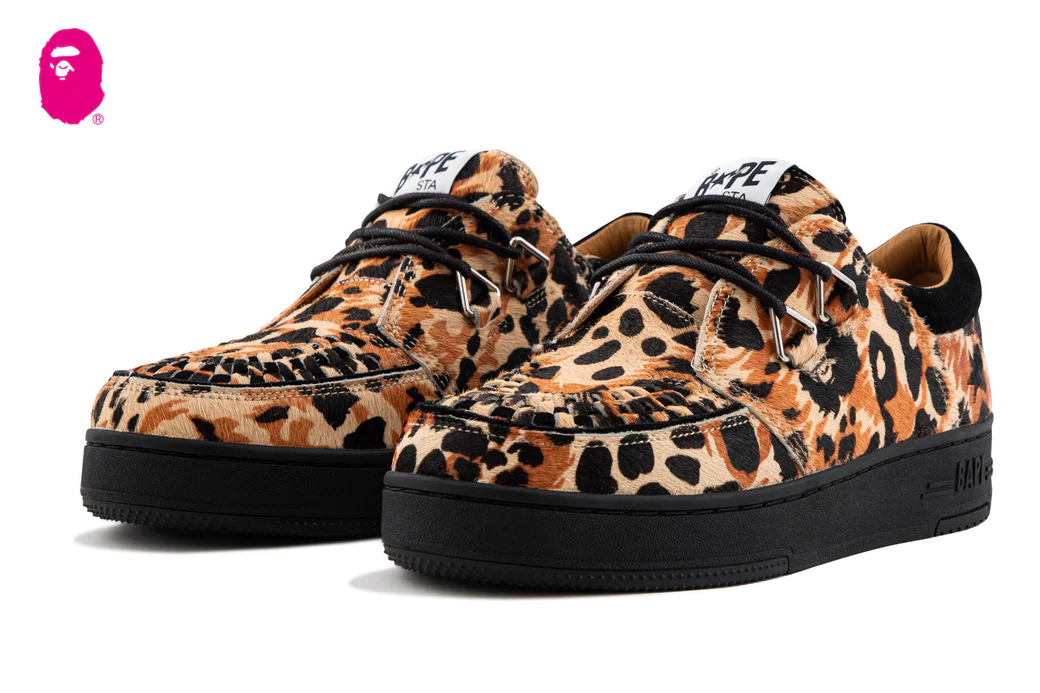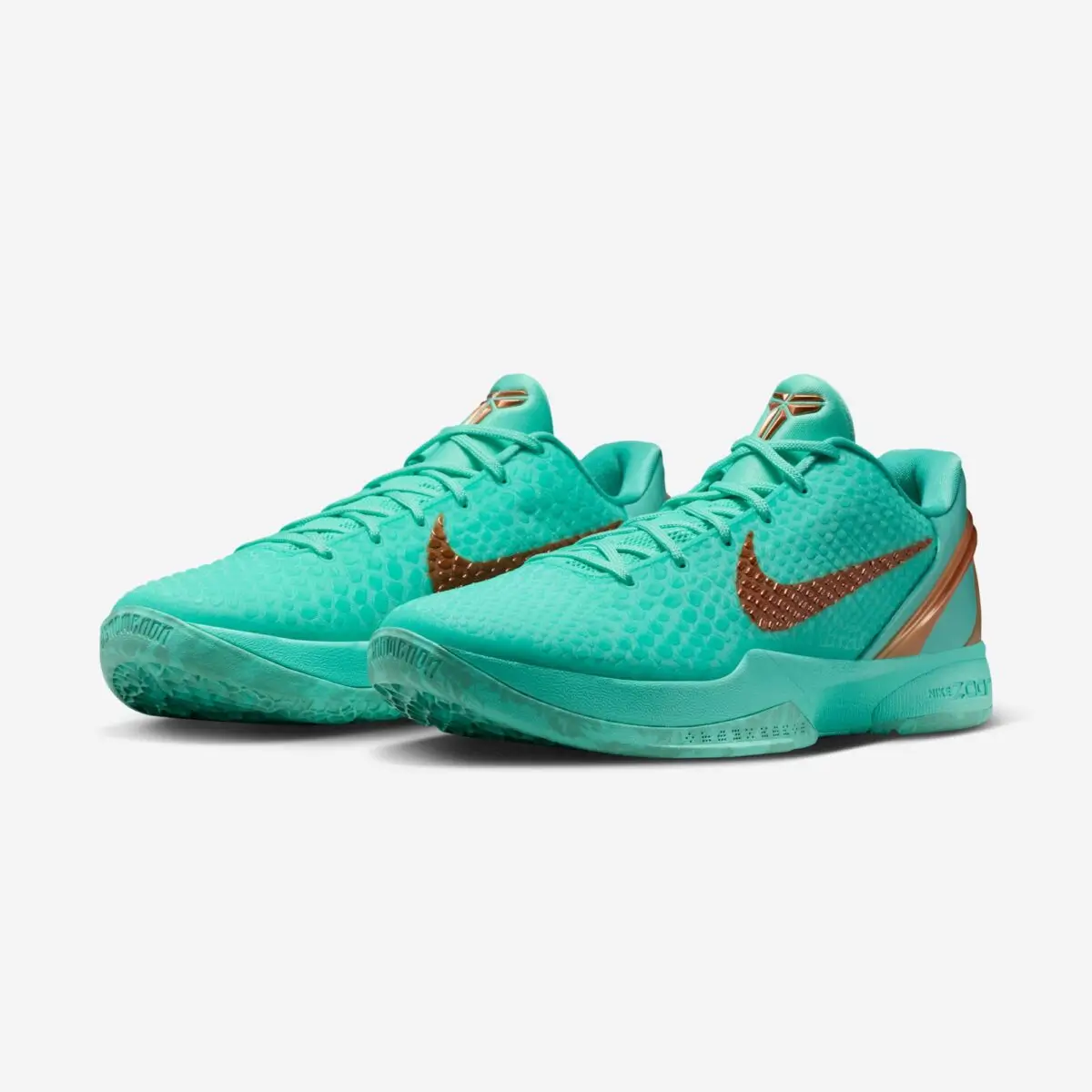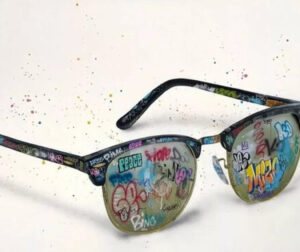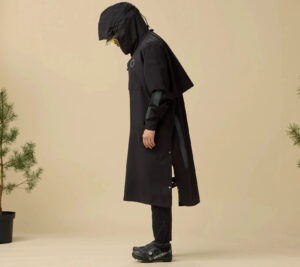In an industry often driven by mass production, rapid cycles, and fleeting trends, The Bravest Studios Clay Shoe emerges as something far more radical: footwear conceived not as commodity, but as sculpture. A sneaker that begins its life not in the digital design studio, but in the hands of an artist, molded from clay, imbued with tactile imperfection, and then transfigured into everyday wear. This fusion of craft, technology, and design philosophy places the Clay Shoe in a lineage not of mere sneakers, but of wearable art.
The Genesis: From Clay to Concept
The Bravest Studios, a creative label known for its boundary-pushing releases, turned to an ancient material to rewrite a modern narrative. Before there was foam, mesh, or leather, there was clay — the medium of humanity’s earliest vessels and sculptures. The Clay Shoe begins with this elemental step. Each pair originates as a hand-sculpted clay prototype, shaped with no regard for symmetry or production efficiency. The intention is raw artistry, not commercial polish.
This first phase is crucial: it acknowledges imperfection as a design language. Every curve and crease is deliberate yet organic, reflecting the fingerprints of its maker. In this stage, the Clay Shoe is less a sneaker than a piece of contemporary sculpture, echoing the traditions of studio pottery and modernist art forms.
The Digital Alchemy: 3D Scanning and Mold Creation
Once the clay form is complete, technology intervenes — not to erase imperfection, but to preserve it. Using 3D scanning, The Bravest Studios captures the clay model in all its irregular detail. The digital file then informs the creation of molds, which serve as the framework for the wearable iteration.
This is where the Clay Shoe distinguishes itself from both handcrafted artisan footwear and traditional mass-market sneakers. It exists at the crossroads: hand-sculpted artistry meets high-precision scanning and molding. The imperfections of the clay survive the transition into foam, ensuring that no pair feels sterile or mechanical. The resulting mold serves not as a standardizing tool but as a vessel to carry forward uniqueness.
Comfort Meets Craft: The Foam Base
The finished product rests on a lightweight foam base, engineered not only for durability but for everyday comfort. While its visual language speaks to art galleries and sculpture gardens, its materiality serves sidewalks, commutes, and casual wear. The foam’s cushioning quality makes the Clay Shoe paradoxically both experimental and practical — a reminder that innovation in design does not require the abandonment of function.
This base completes the dialogue between hand and foot: sculpted by an artist, worn by an individual, grounded in the needs of daily life. In this sense, the Clay Shoe demonstrates that art and utility are not mutually exclusive but mutually enriching.
Hand-Painted Finishes: Every Pair Unique
No two Clay Shoes are identical. After the molds are completed, each pair undergoes an additional stage of personalization: hand painting. This final layer of human touch transforms the shoes once again, elevating them into objects of individual character. Subtle variations in brushwork, tone, and shading create differences that can never be mass replicated.
For collectors and enthusiasts, this feature ensures that ownership carries a dimension of exclusivity. To wear a Clay Shoe is to possess something singular, an artifact of both artistic expression and personal identity. Much like limited-edition art prints or hand-thrown ceramics, each pair balances the tension between reproducibility and uniqueness.
Footwear as Sculpture
The Bravest Studios is not the first to challenge the notion of sneakers as mere footwear, but the Clay Shoe marks a particularly bold statement in a cultural moment where the sneaker already occupies a liminal space between utility and collectability.
In recent decades, sneaker culture has blurred the lines between product and art form. Collaborations with artists like Takashi Murakami or Virgil Abloh have pushed the sneaker into the realm of conceptual design. Yet the Clay Shoe advances this evolution by making the design process itself sculptural. Instead of simply commissioning an artist to decorate an existing silhouette, the shoe itself is born from sculpture. This flips the traditional pipeline — art does not embellish fashion here; it is the foundation.
A Reflection on Craft and Technology
The Clay Shoe also speaks to a broader dialogue in contemporary design: the balance between handcraft and technology. Where some fear that digital processes sterilize creation, The Bravest Studios proves the opposite. By starting with clay, capturing its raw irregularities through 3D scanning, and returning to hand painting, the brand illustrates that technology can preserve, rather than erase, human touch.
This cycle — hand to digital to hand again — creates a closed loop of artistry and engineering. It ensures that the soul of the clay is not lost but carried forward into the final foam form.
Symbolism and Storytelling
Beyond materials and methods, the Clay Shoe carries symbolic weight. Clay itself is earth: humble, malleable, primal. To mold clay into a sneaker is to ground a modern icon — the trainer, emblem of urban speed and global culture — in something ancient and tactile. It suggests a reconciliation between slow craft and fast fashion, between permanence and impermanence.
The shoe is also a reminder of individuality in an age of sameness. Mass production delivers uniformity, but the Clay Shoe reasserts the value of difference. Each pair is its own story, shaped and shaded by human hands. In this sense, they are not only wearable art but wearable narratives.
Flow
For collectors, the Clay Shoe is both conversation piece and cultural statement. For the broader public, it is proof that sneakers can transcend trends and participate in dialogues of design, art, and philosophy. Within fashion, it signals a shift away from chasing performance metrics or hype-driven collabs and toward deeper engagement with process and story.
The Clay Shoe may not dominate courts or tracks, but it commands attention on streets and in collections. It stands as both rebellion against and evolution of sneaker culture, asserting that shoes can be more than accessories — they can be art.
Impression
The Bravest Studios Clay Shoe is not merely footwear. It is the materialization of an idea: that the things we wear daily can embody the same artistry, imperfection, and individuality as the objects we place on pedestals. By sculpting clay, digitizing form, molding foam, and painting by hand, The Bravest Studios has given us not just a shoe, but a manifesto in material.
In the future, when we look back on the cultural artifacts of our era, the Clay Shoe may be remembered less as a trend and more as a turning point — proof that even in the world of sneakers, art can still take the first step.
No comments yet.

